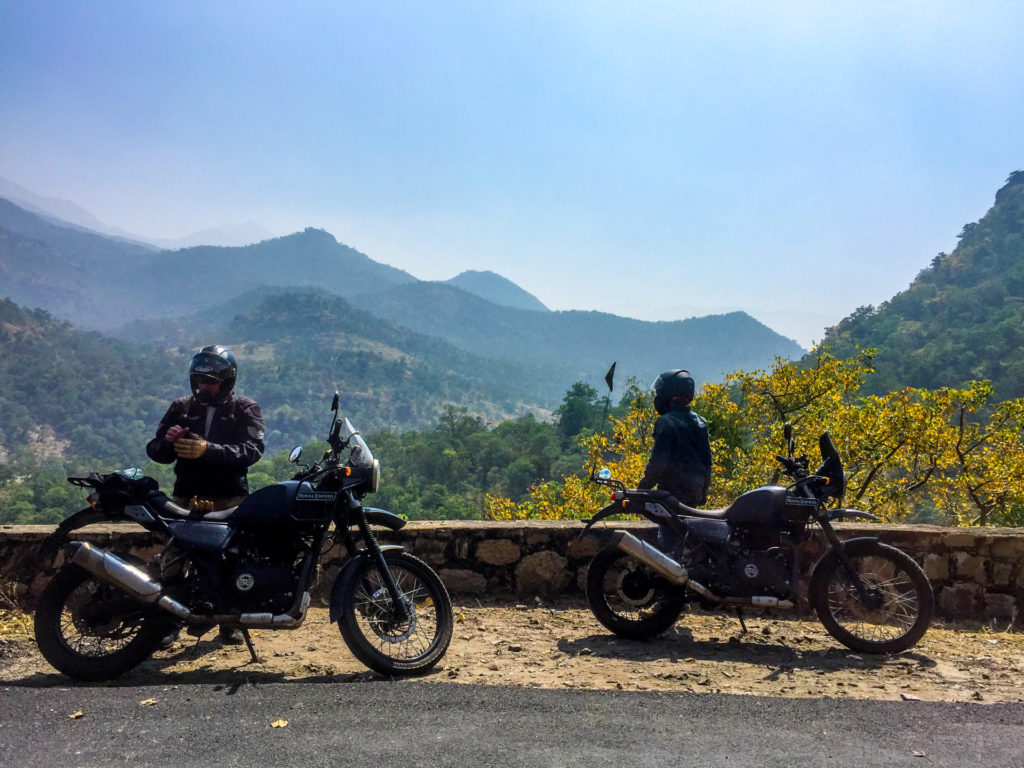
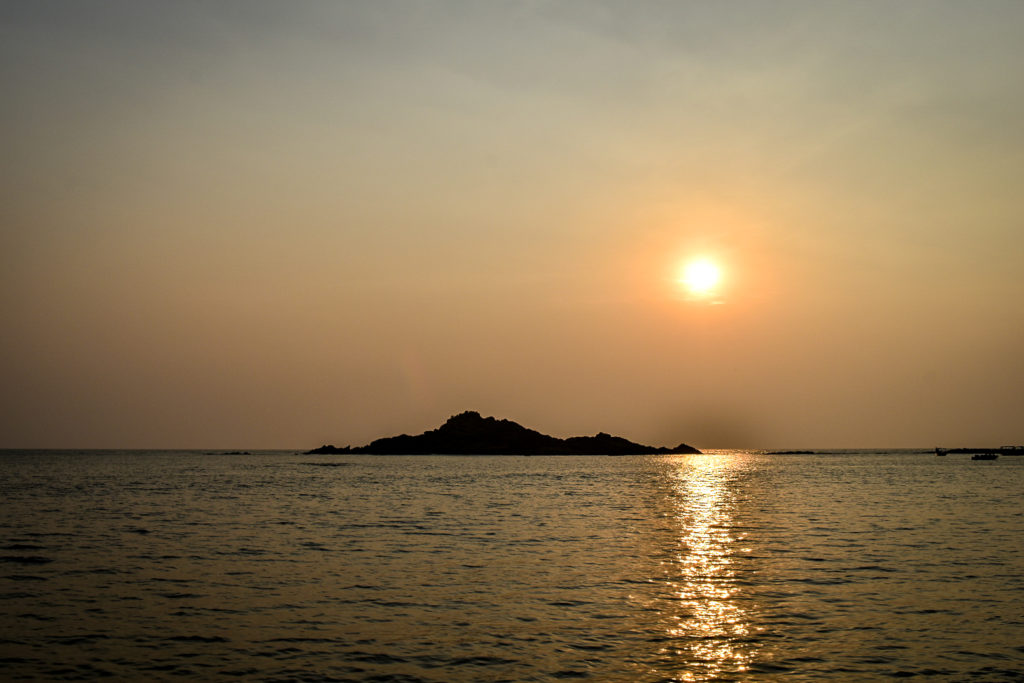
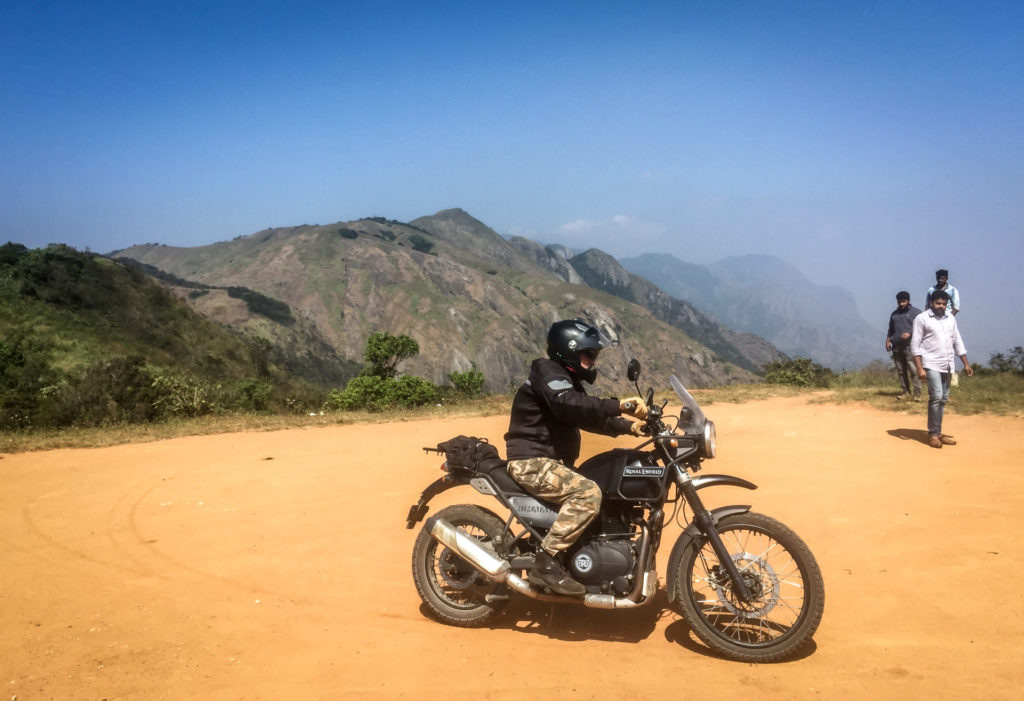
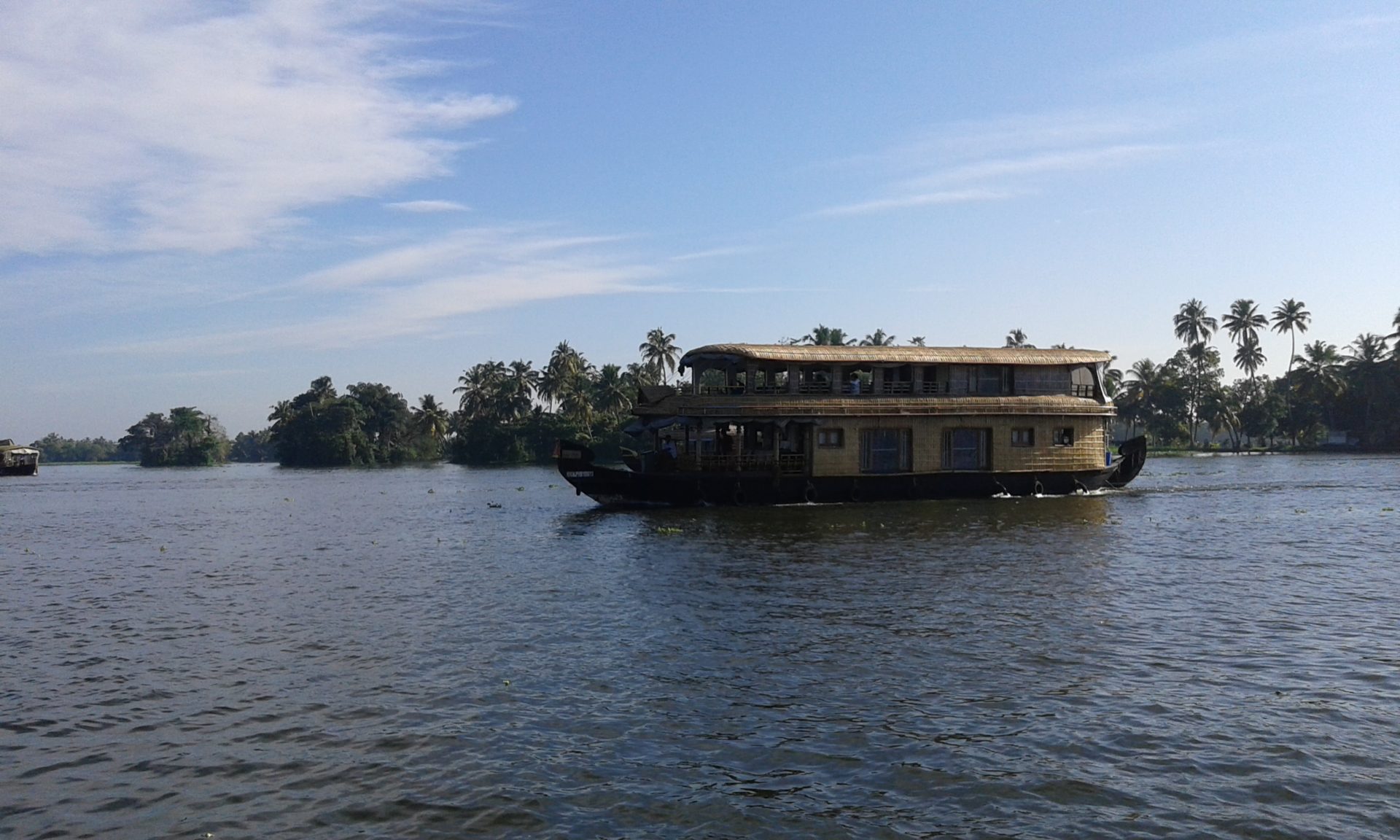

Overview
Program
Day 1: Arrival in Trivandrum & Bike Instruction
After the international flight and transfer, we arrive at the Heritage Hotel in the colonial city of Trivandrum, the former capital of the province of Travancore and today’s capital of Kerala. The city is home to many historical monuments, including the famous Padmanabha Swamy Temple, museums, art galleries and fascinating beaches. After you have settled in at the Hotek, the tour meeting follows with a briefing on the motorcycles. A leisurely evening stroll makes the traces of the jet lag disappear.
Day 2: Drive to the backwaters & houseboat cruise in Alleppey
In the early morning we start along the coast of the Arabian Sea and drive through farming villages until we reach the back waterof all the way from Allepey. We drive over long bridges that take us across the wide estuaries. Here we climb into the famous houseboats to spend the rest of the day looking at the unspoilt ecosystem. In doing so, we experience the simple life of the locals. Did you know that a houseboat is a reworked model of the kettuvallam (in Malayalam language, kettu means ‘tied with ropes’ and vallam means ‘boat’), which was used to transport rice and spices from Kuttanad to Kochi port? It is an enchanting and relaxing experience to relax on the deck and take an unforgettable journey through the backwaters.
| Houseboat | F (M) A | 154 Km |
Day 3: Drive into the wilderness of Periyar
After leaving the houseboat, we will leave the rice fields and lagoons behind us and drive towards the gumland Pala and then continue through the picturesque Vagamon until we reach Periyar on mountain roads. Periyar is one of the few remaining wild tiger habitats in India (and the world) and is part of Project Tiger, a conservation project to protect the Royal Bengal Tiger. Located high in the mountains of the Western Ghats, this protected area covers 777 km2, of which a 350 km2 forest is part of the core zone known as The Periyar National Park and Tiger Reserve. Famous for its picturesque lake and lush flora and fauna, this well-preserved park is run by the Forestry Authority and supported by local tribes and communities that still live on the periphery of the park. Here we can go on hikes in the rainforest and boat safaris, or visit the spice plantations.
| Forest Canopy | F (M) A | 150 Km |
Day 4: Drive to the tea country of Munnar
After the morning trekking in the Tiger Reserve we set off on our next destination. As we drive through the small village streets, the landscape slowly transforms into small spice farms – pepper and cardamom farms -, tea plantations and finally we drive along the main road towards Munnar. “Welcome to the land of Neelakurinji”, the flower that covers the hills every twelve years “, and the endangered Neelagiri Thar. The hills here are covered by lush plantations of green tea and are 1600 to 1800 meters above sea level. We visit the tea museum in the afternoon to learn some interesting facts about tea plantations and tea production in Munnar and take a walk through the local bazaar.
| 100 km | ||||
| Eastend | F (M) A |
Day 5: To the temple city of Madurai
Today we drive down the mountain roads and leave the forests of Kerala behind us. We continue through the picturesque agricultural landscape of Theni in Tamil Nadu to the great temple city of Madurai. This bustling city in Tamil Nadu was founded in the Sangam period of the pre-Christian era and is famous for its ancient temple – the Meenakshi Temple. Here we visit the temple to admire the beautiful architecture on the banks of the river Vaigai. The night ceremony in the temple with an all-round illuminated lamp is a real feast for the eyes.
| Madurai Heritage | F (M) A | 160 Km |
Day 6: Drive to the village of Pollachi
Our goal today is Pollachi. We drive through the great plains of Tamil Nadu over windy roads, along villages, small temples and wide fields, and can marvel at the mighty western ghats heading south. During the drive we pass Dindigul, a small town, as well as the Palani Hills – a famous pilgrimage destination in South India, before reaching the picturesque village of Pollachi. Here we stay in a picturesque resort surrounded by quiet palm groves.
| Coco Lagoon | F (M) A | 180 Km |
Day 7: Drive to the Queen of the Hills – Ooty
With a panoramic view of the plains, we drive through Mettupalayam, considered the gateway to the Nilgiris by the East India Company. we also see the unspoilt mountain town of Coonoor with its picturesque landscapes and tea plantations. The journey soon takes us to Ooty – a hill station at an altitude of around 2,200 m in the Nilgiri Hills, which was once considered the summer capital of the East India Company. While we relax in our beautiful accommodation, the fog passes the hills and we can feel the freshness in the air. Ooty is known for its artificial lake, rose garden and Nilgiri tracks and is popular with bird lovers.
| Accord | F (M) A | 150 km |
Day 8: Drive to the historic city of Mysore
We drive downhill along the 12 km long stretch of the famous 36 hairpin bends to the Ooty exit. Next we pass the wilderness hotspot Mudumalai at the foot of the Nilgiri Hills. The terrain is varied with hills, valleys, gorges, waterways and swamps, moist and dry deciduous forests and bush forests. Therefore, this is an ideal destination for bird watching and wildlife, especially elephants. Further north we reach the historic town of Mysore, the official seat of the Wodeyar Dynasty, the former royal family of Mysore. A visit to the palace and the Chamundi Hills as well as a view of the hectic Mysore markets are part of the tour before we rest for the night.
| Southern Star | F (M) A | 265 km |
Day 9: Drive to the coffee town of Chickamagaluru
Today we drive through country roads shaded by the trees and the occasional banyan and coconut groves. We experience the beauty and unique culture of rural South India up close. We stop in the historic town of Hassan to admire the complex architecture of the 12th century temples of Hoysaleswara or Chennakesava in Halibedu and Belur respectively. After the well-deserved cultural break, we drive to Chikamangalur, the coffee capital of Karnataka, to reach the Taj Resort, which is located on the gentle slopes of the Sahyadri Mountains and surrounded by flower-adorned gardens. This part of the country is also known as the land of coffee. We spend the rest of the day visiting the coffee, tea and spice plantations.
| Linger at Balur | F (M) A | 175 Km |
Day 10: Drive through the rainforest to Kundapura
Today the route winds uphill through the lush green rainforest of Agumbe, home to the King Cobras, and through the countryside of Koppa, a small town surrounded by the Western Ghats and situated at an altitude of 800 meters above sea level. It is also known as the Kashmir of Karnataka, because of its mild weather and the fascinating landscape. The trip ends in the town of Kundapura, which is surrounded by water from three sides. To the north is the Panchagangavali River, to the east is the Kalaghar River, and to the west is kodi backwater and the Arabian Sea. The south is the only side that is connected to the main land mass.
| UVA Meridian | F (M) A | 175 Kms |
Day 11: Drive to the quiet Gokarna
The next day we drive along the coastal road, which smells strongly of sea and sand. On the way we visit the Murudeshwar Temple in Honnavar with the huge statue of Lord Shiva and cross the Sharawati River. We drive along the hilly roads to reach the coastal roads back towards Gokarna, a small and remote holy city with four of India’s most remote and pristine beaches. The main attractions of Gokarna are actually the beaches where people relax for months and enjoy the sun. Our journey ends today at a picturesque resort. A delicious dinner is planned in a special restaurant.
| Stone Wood Resort | F (M) A | 140 Km |
Day 12: Drive to South Goa
Again we drive along picturesque cliffs that descend to the beautiful beaches. This land is also known as the “mango belt” for the delicious “Alphonso” mangoes that grow here in abundance. They pass Through Karwar, an old port for maritime trade frequented by Arabs, Dutch, Portuguese, French and later Britons. It is historically significant. The picturesque Fort Sadashivgad is located on the Kali River, where Karwar is located. From here we drive towards the beautiful beaches of South Goa.
| Agonda Paradise | F (M) A | 130 Km |
Day 13: Drive to North-Goa
Today is the last day of our tour and also the last day on which we can admire the beauty of Goa. The trip leads to the northern parts of Goa. On the way we also visit the villages in the interior of Goa, temples, churches and historic bungalows. We can also take a break to visit the Bom Jesus Cathedral, an expression of Portuguese sovereignty for 400 years of colonial rule. Of course, you can also just relax on the beach today!
| Casa Anjuna | F | 100 Km |
Day 14: Departure
This day marks the end of the 14-day motorcycle tour through South India. Hopefully you will return with timeless memories of the unforgettable motorcycle tour through the unique South India.
2 days Hampi extension
We will take the long way to Hampi to explore the ruins and temples of Unesco Vlade Cultural Heritage (8 hours). Hampi was once the thriving capital of the Vijayanagar Empire and was rich in wealth, military skills and culture. The Pampati Swami Temple, the Queen’s Bath, the Lotus Mahal, the King’s Balance and the musical columns of the Vittala Temple are reminiscent of past splendour. Other major attractions include the temple complex of Lord Virupaksha, Ugra Narasimha, Matanga Hill and the Vittala Temple Complex. But not only culturally Hampi has a lot to offer, but also scenically, the area is unique with the millions of rocks that seem to have been scattered as if by God’s hand.
Included services
- Accommodation and meals (all meals included F: breakfast, M: lunch, A: dinner) as described
- 350 CC Royal Enfield bikes with spare parts and helmets (optional)
- Support vehicle
- English speaking tour guide and support mechanic
- Refreshments & mineral water
- All activities and entrance fees according to the itinerary
- City guide near Madurai & Mysore
- Intergovernmental approval and tolls
- Gasoline
- German-speaking tour guide
International flightvisaTipsunmentioned meals and drinksExtra trip to Hampi (please make request)
Highlights

Motorcycle Tour South India 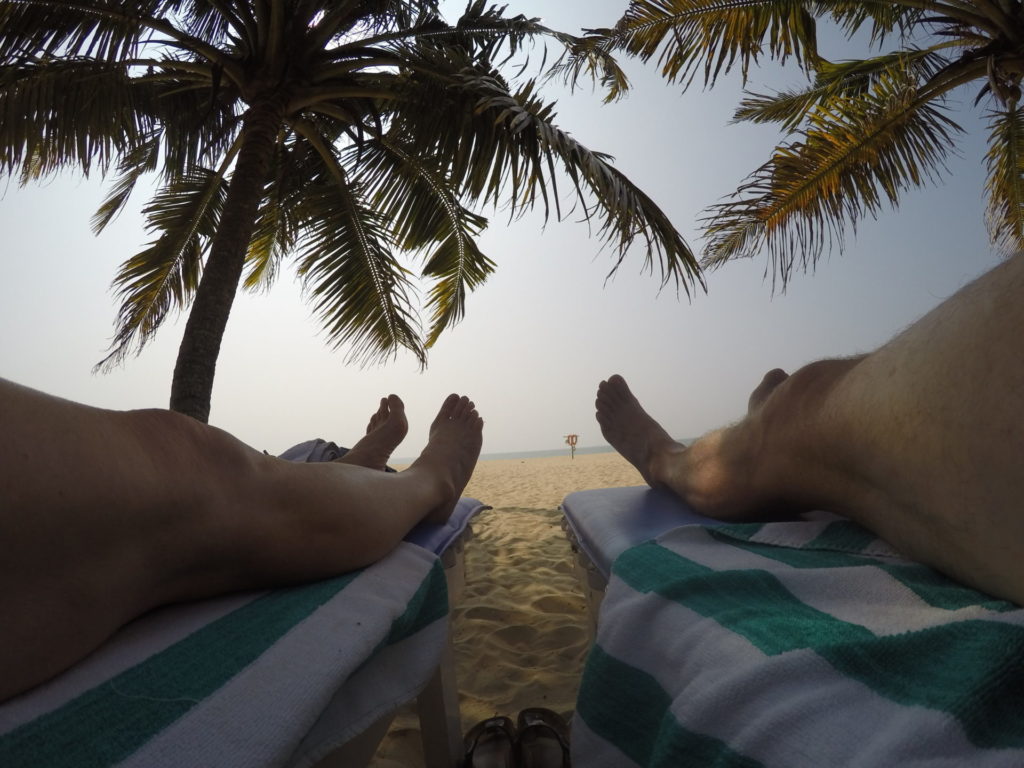
Motorcycle Tour South India 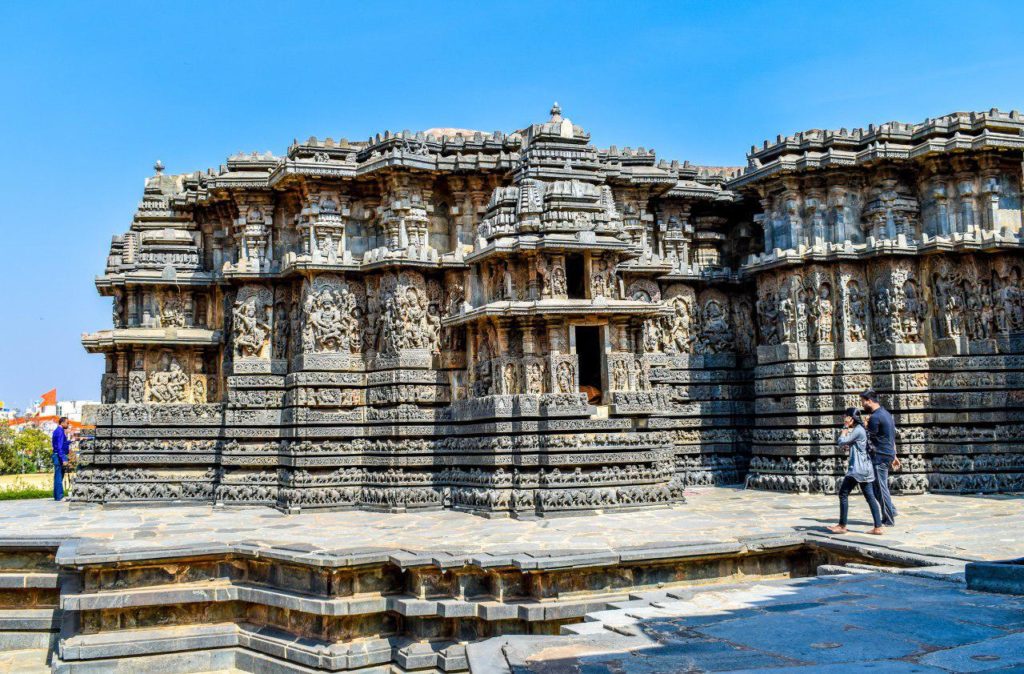
Motorcycle Tour South India 
Motorcycle Tour South India 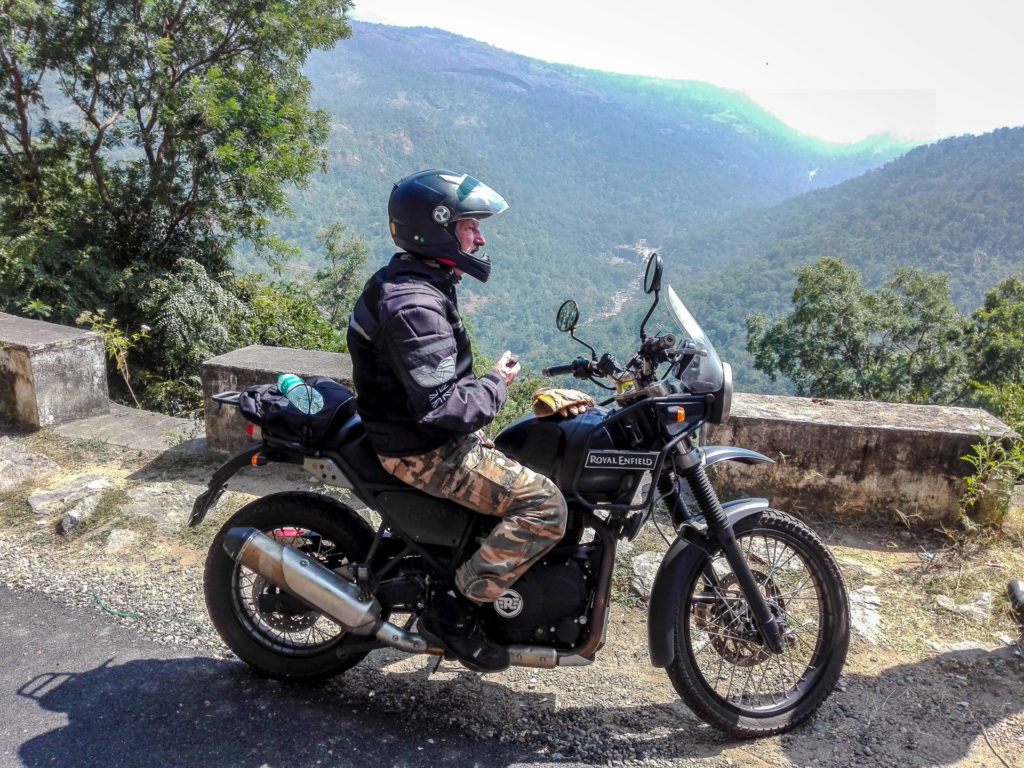
Motorcycle Tour South India 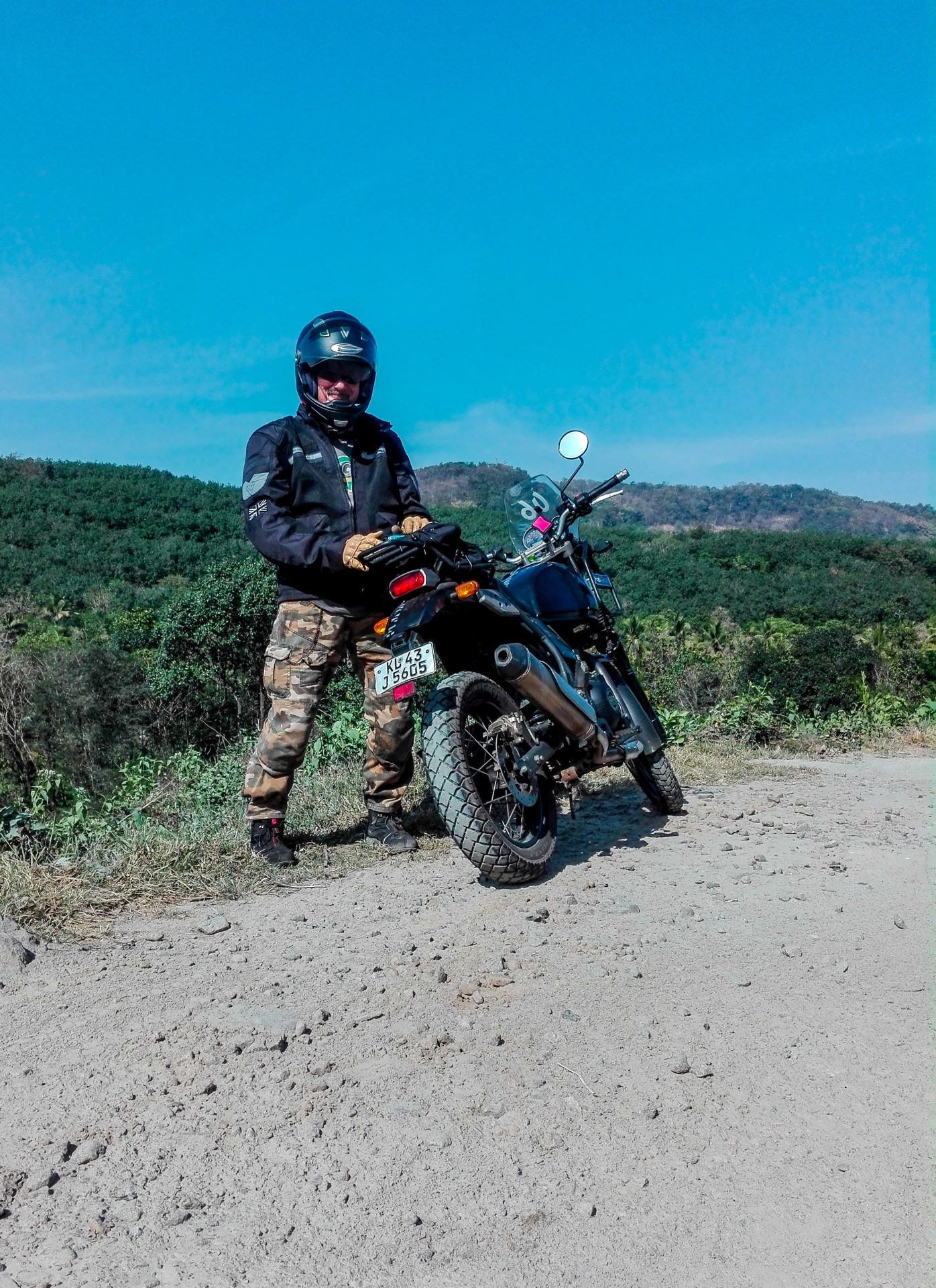
Motorcycle Tour South India 
Motorcycle Tour South India 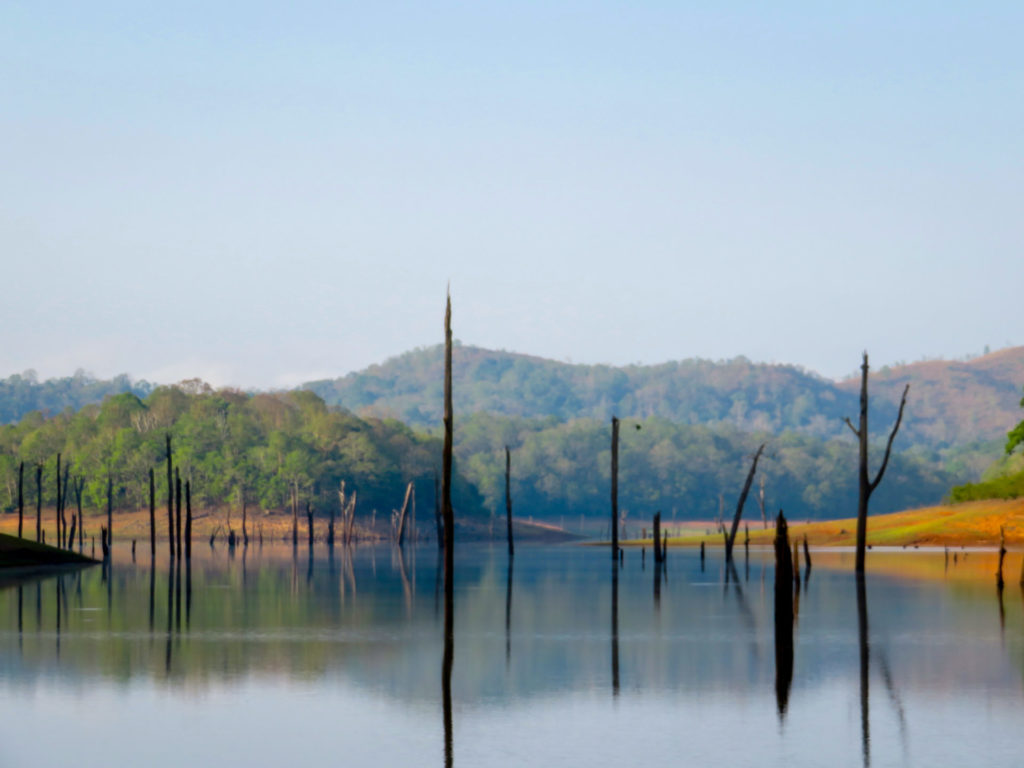
Motorcycle Tour South India 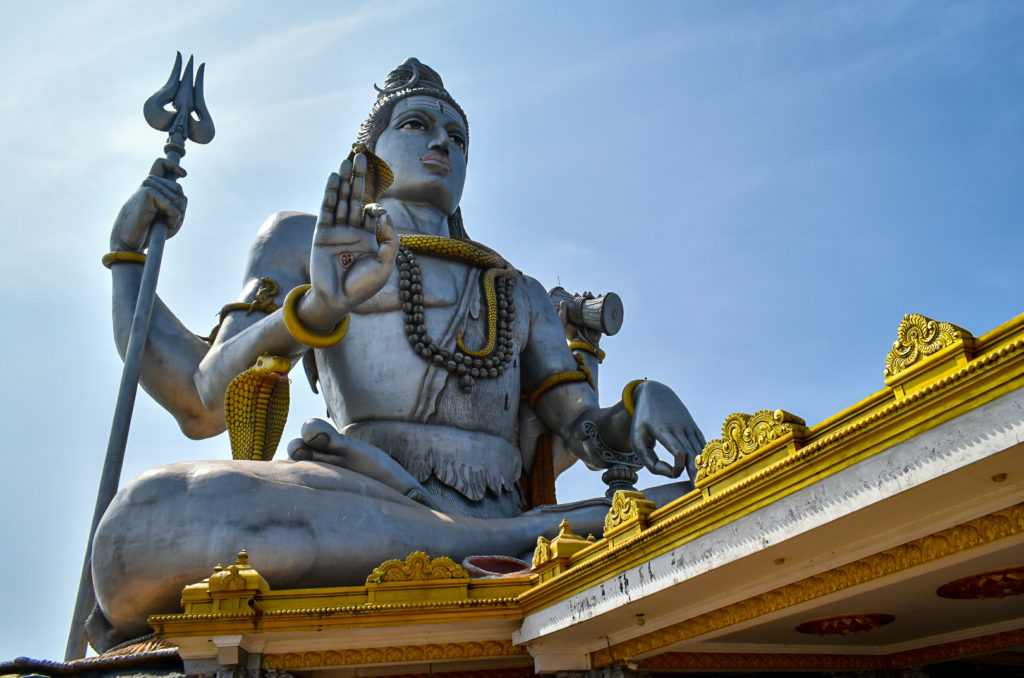
Motorcycle Tour South India 
Motorcycle Tour South India 
Motorcycle Tour South India 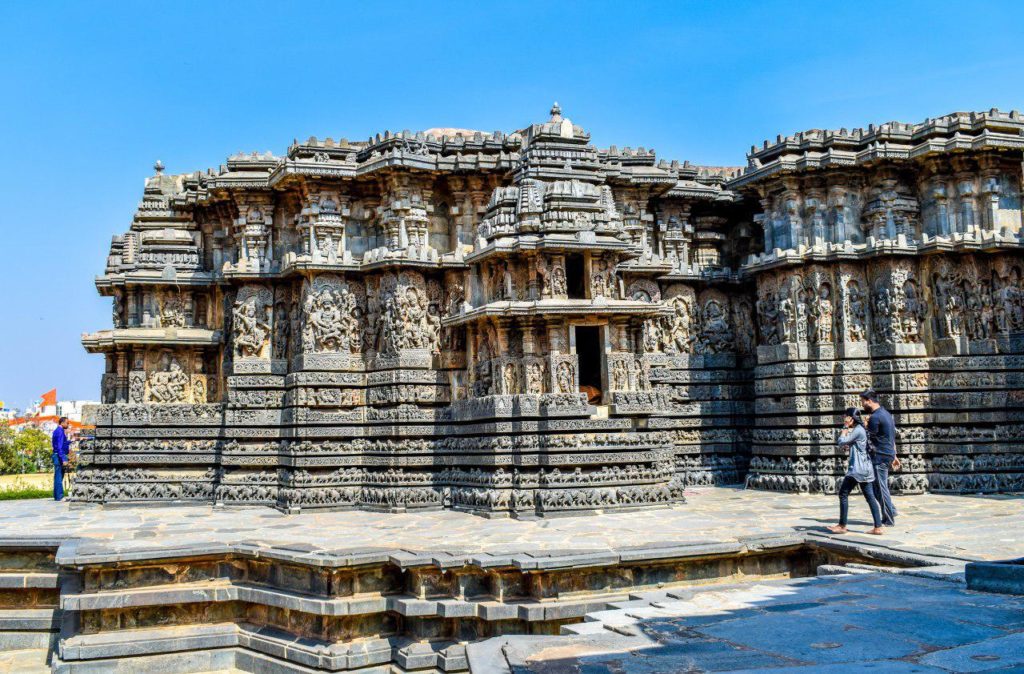
Motorcycle Tour South India 
Motorcycle Tour South India 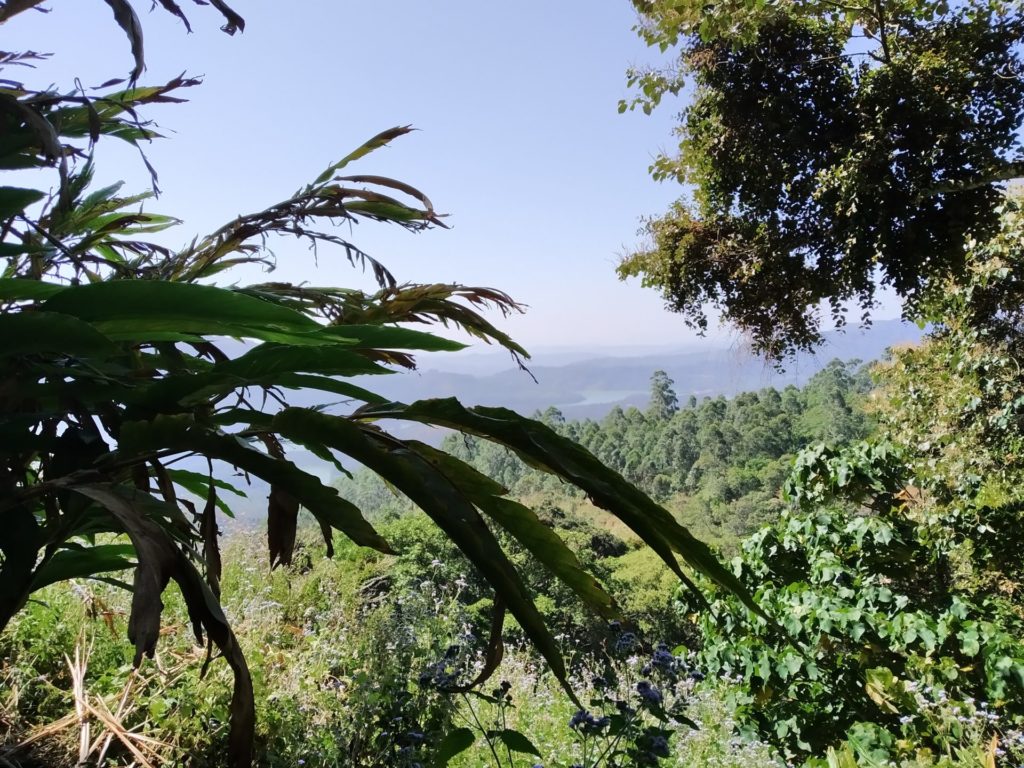
Kerala 
Fruit stand in Kerala 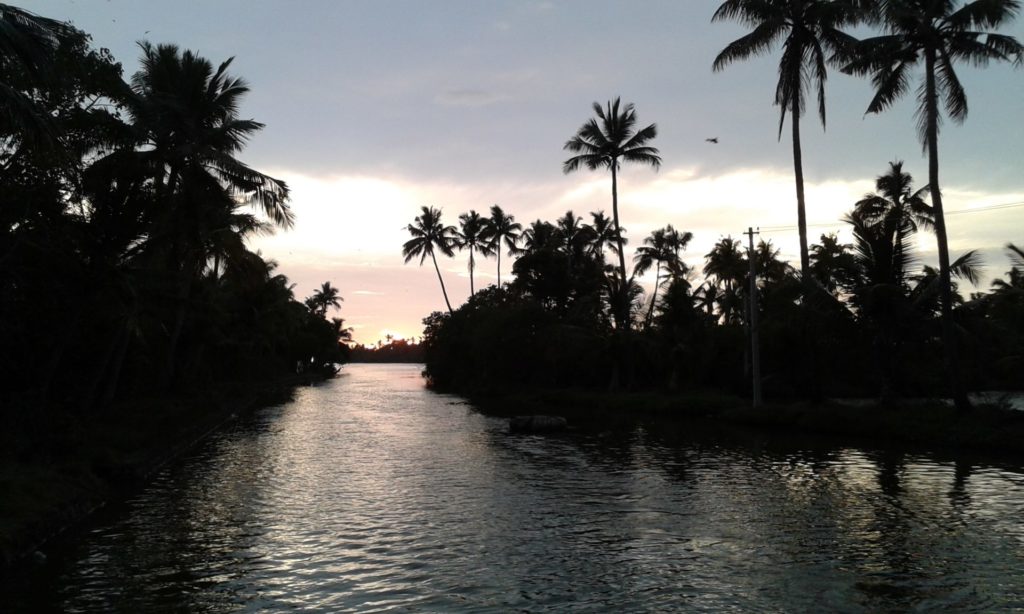
Backwaters in Kerala 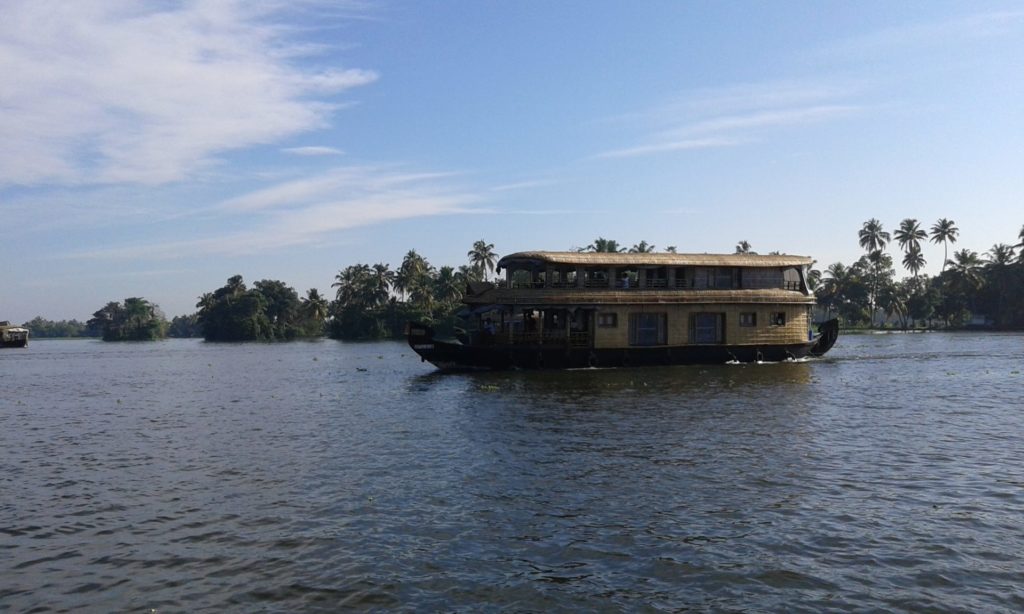
Houseboat 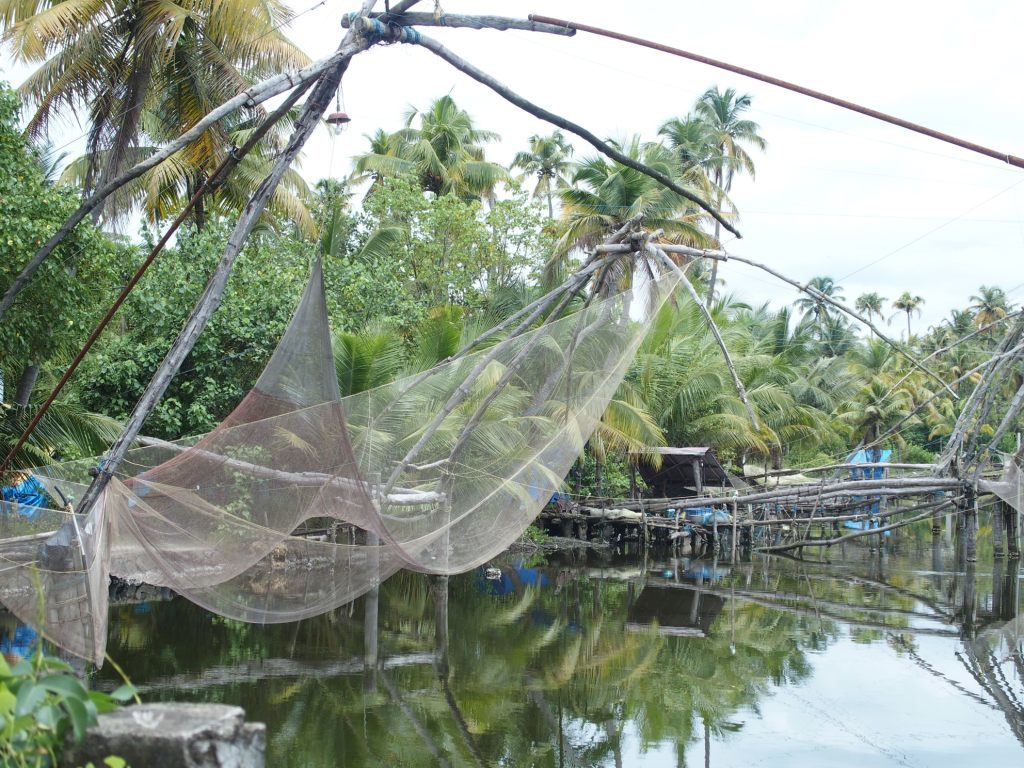
Chinese fishing nets 
Tea plantations 
A Keral meal on the banana leaf
Prices and dates
| Persons | 4 | 6 | 8 | 10 |
| Price per person without German-speaking travel companion | 3250 € | 2900 € | 2600 € | 2500 € |
| Price per person with German-speaking travel companion | 3650 € | 3300 € | 2850 € | 2700 € |
| For price for escort drivers please make request | ||||
No surcharge for German-speaking tour guide for group tours with 11 or more participants
Fixed date:
16.11.2025- 29.11.2025
15.11.2026- 28.11.2026
Travel info
Requirements
This tour does not present any high challenges to the technical driving style. The mostly small village roads are well developed and mostly asphalted.
However, we assume a safe and experienced driving style. In India, the most important rule is to drive with open eyes and react quickly – there is little adhered to traffic rules here. Attention: Left-hand traffic!
additional Information
Of course, a motorcycle driving licence is necessary – usually the International Driving License, which can be applied for free of charge with the German authorities.
Larger repair costs in the event of self-inflicted damage must be borne by the participants.
We recommend taking your own motorcycle clothes as well as your own helmet.
Travelling with a passenger is possible for a lower travel price. Please ask a question for this.
Reside
We stay in beautiful and well-kept hotels of the upper category with air conditioning. Laundry services, Wi-Fi and restaurants are available in all units. All meals are included in our itinerary.
getting there
The journey to Trivandrum takes place independently on the first day of the trip. Departure is from Goa. Please contact us before booking your flight so that we can arrange the exact dates in advance. Airport transfers are included.
What is the climate in Southern India?
The climate is subtropical. In July/August is monsoon season, which manifests itself in short showers. The best time to travel is October to March.
In the south of the country, the sun’s irradiation is particularly intense due to its proximity to the equator. To avoid unpleasant and long-term dangerous sunburns, make sure you use good sun protection and drink enough fluids.
Dangerous currents repeatedly lead to swimming accidents on the coasts. Warnings on the beaches are essential.
What language is spoken in India?
The official national languages are English and Hindi. In Kerala, however, Malayalam is spoken. In addition, there are numerous regional national languages, all of which differ in word and writing, and there are also over a hundred dialects.
Is there a time difference?
Yes, there are: India versus Germany (CET) + 4.5 hours, during European daylight saving time it is + 3.5 hours.
Notes on money/currency:
The local currency rupee may not be entered or exported. Travellers wishing to import more than 5000 cash or traveller’s cheques must indicate this on the currency declaration form you receive upon your entry. We recommend taking euros with you. It is easily possible to exchange money in hotels or banks and bureaux de change, with the exchange rate being uniform. It is recommended to keep the receipt to ensure a return at the airport. International credit cards are accepted by most hotels in major cities and tourist centres.
Notes on “additional costs” and tipping:
For the drinks and snacks not included in the price of the trip, you should calculate about 5-10 € per day.
Tips are a voluntary service, which everyone should decide for themselves. Please note, however, that tipping is common in many cultures and is an important part of income due to the relatively low wage level. As a rule of thumb, 5-10% of the invoice amount is appropriate. India is a travel country where a tip is expected for each service. Be it the luggage carrier, the service staff in the restaurant and hotel, for the toilet or the rickshaw ride.
Here is a detailed orientation. Menus often include a surcharge indicated as a service batch. However, the waiters usually see little of this. An additional tip of 5-10% is appropriate. Porters, drivers and guides also expect tipping. For racks 20-30 Rs per bag is attached, for maids 20-30 Rs per day. Your tour guide will be happy to advise you.
Tip: Talk to your fellow travellers. It has often been proven that one of the group gives a reasonable tip on behalf of the whole group (e.g. for the tour guide and driver). Experience has shown that each traveller will receive a tip of around 60 € for the entire trip. But: Tips are voluntary and please communicate with each other on site how you want to deal with it.
What equipment should you think of?
- Passport
- Printing of the electronic tourist visa (e-TV)
- Cash/EC card/credit card
- Photocopies of the most important documents (keep separate from originals). Send a copy via PDF to your own email in advance.
- Travel
- Day backpack (approx. 25l volume if possible with integrated rain cover)
- Motorcycle clothing and helmet
- light and airy clothing (short trousers, tshirts, shirts, sandals)
- Long trousers and sweater/jacket (for the evening and/or rooms with air conditioning)
- Handkerchiefs (possibly also wet handkerchiefs for body hygiene)
- Photo equipment do not forget.
- Field cutter/remote glass if necessary
- bathing suits, bath towel
- Sunprotection and headgear (cap, hat or headscarf, sunglasses, sunscreen)
- Travel pharmacy, first aid kit, possibly personal medications, insect repellent
- Due to different socket types, we recommend taking an international adapter set with you.
Vaccination instructions:
There are no vaccination regulations for direct entry from Germany. The Foreign Office recommends checking the standard vaccinations when travelling to India. These include vaccinations against tetanus, diphtheria, pertussis, polio, mumps, measles, rubella and influenza, as well as pneumococci.
Vaccinations against hepatitis A and typhoid, long-term stays or special hazards are also recommended for travel vaccinations against hepatitis B, rabies, meningococcal meningitis ACWY and Japanese encephalitis.
Please keep in mind that vaccination regulations may change in the short term. In addition to the family doctor, individual information is also provided by the health offices or tropical institutes.
Further information at www.auswaertiges-amt.de or www.crm.de




